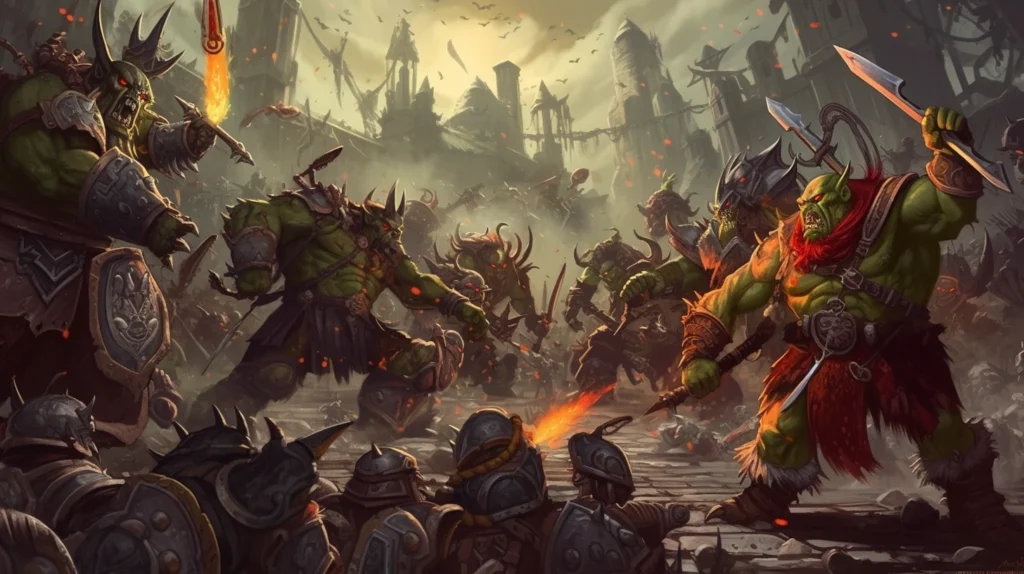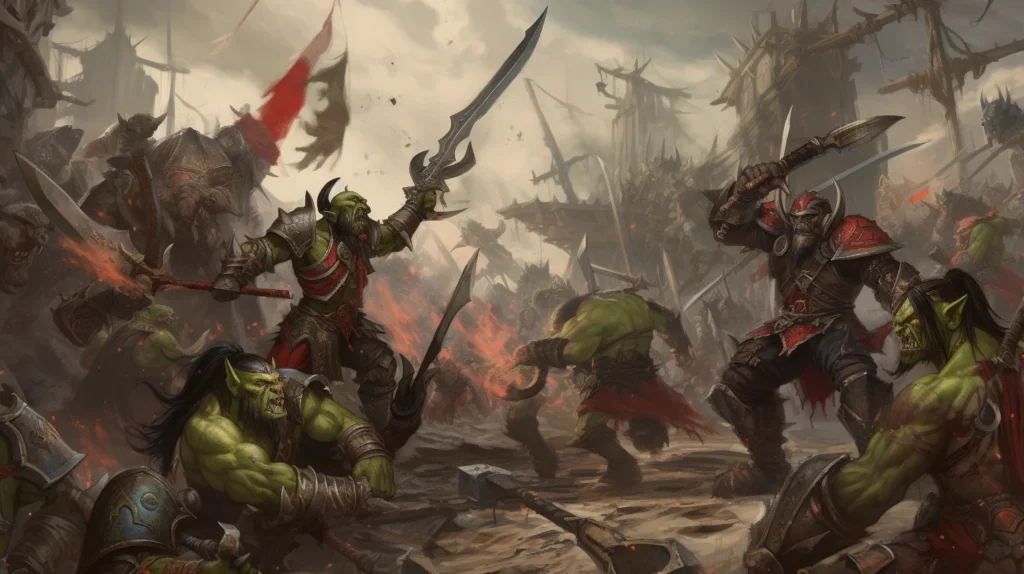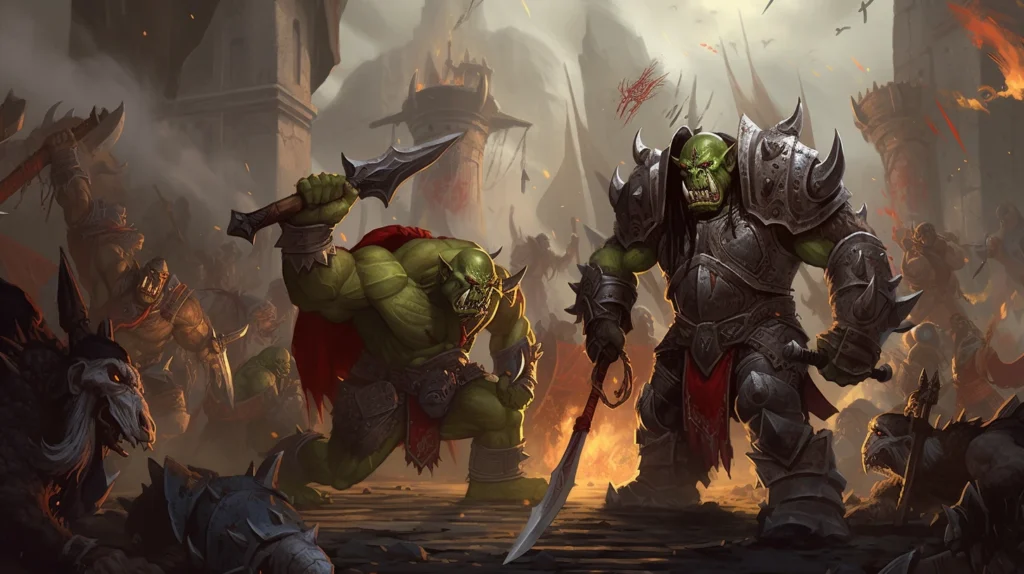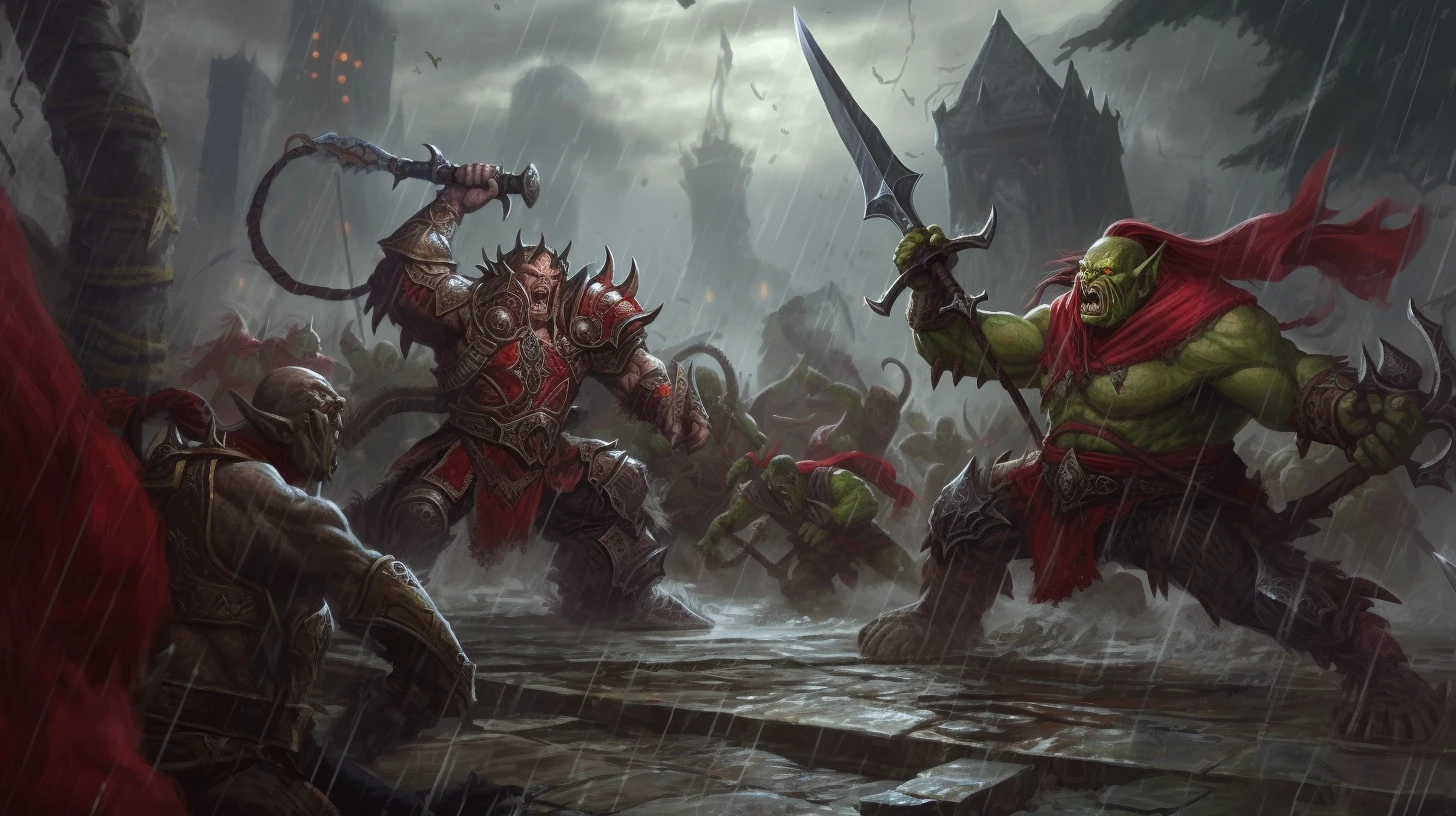Warcraft Rumble emerges as Blizzard Entertainment’s latest addition to the mobile gaming arena, extending the venerable Warcraft universe into a new, accessible format. This game blends strategic depth with the rich lore and fantasy elements that have long defined the Warcraft series, offering a unique experience on mobile platforms.
At its core, Warcraft Rumble is a real-time strategy game where players collect and deploy a variety of units, each with unique abilities, to outmaneuver opponents in tactical battles. Set in the iconic Warcraft universe, it brings familiar faces and elements into a format that emphasizes quick thinking and strategic planning.
Central to understanding and excelling in Warcraft Rumble is the tier list system. A tier list in gaming is a ranking system that categorizes characters, units, or strategies based on their effectiveness in competitive play. In Warcraft Rumble, this translates to ranking leaders and troops based on their performance, versatility, and impact in various game scenarios. The tier list is not just a measure of individual unit strength, but a reflection of how well they synergize with other units and fit into the current meta, or the prevailing trends and strategies in the game.
Understanding the tier list is crucial for both newcomers and seasoned players, as it guides them in building effective decks and strategies. It offers insights into the game’s balance and helps players make informed decisions about how to invest their time and resources.

The Essence of Tier Lists in Warcraft Rumble
In Warcraft Rumble, tier lists are more than just a reference; they are a fundamental tool for strategic planning and gameplay. These lists provide a snapshot of the game’s current meta, showcasing which leaders and units are performing well and why.
Tier lists serve multiple purposes. Firstly, they guide player choices, especially for those new to the game or those looking to refine their strategies. By highlighting the strengths and weaknesses of each unit, tier lists help players understand which characters are worth focusing on and which might be less effective in the current meta.
Furthermore, tier lists are dynamic, reflecting the ever-evolving nature of the game. They change with game updates, new unit releases, and as players discover new strategies. This constant evolution keeps the game fresh and challenging, as players must adapt to the shifting landscape of what is considered effective.
For experienced players, tier lists can provide a starting point for experimentation. Understanding why certain units are ranked highly can inspire creative combinations and new tactics. For beginners, these lists offer a roadmap to building competitive decks without extensive trial and error.
Analyzing the Tier List: Leaders at the Forefront
In the world of Warcraft Rumble, leaders are pivotal characters around which decks are built and battles are waged. The current meta, as reflected in tier lists, highlights certain leaders as top-tier choices due to their powerful abilities and synergies with other units.
Top-tier leaders such as Baron Rivendare, Tirion Fordring, and Grommash Hellscream dominate due to their unique abilities that can turn the tide of battle. Baron Rivendare, known for his necromantic powers, allows players to resurrect units, offering sustained battlefield presence and resilience. Tirion Fordring’s combination of offensive and defensive capabilities makes him a versatile leader, adaptable to various strategies. Grommash Hellscream, on the other hand, embodies brute strength, enabling an aggressive playstyle that can overwhelm opponents.
These leaders are not just powerful in isolation; their strength is amplified by how well they synergize with other units. A leader like Rend Blackhand, for instance, excels in controlling the battlefield, making him an ideal match for units that capitalize on strategic positioning.
The unique abilities of these leaders shape the strategies that players adopt. A deck centered around Hogger, known for guerrilla tactics, will differ significantly from one built around the defensive prowess of a leader like Tirion Fordring. This variety in leader abilities and playstyles is what makes the meta of Warcraft Rumble diverse and engaging.
In-depth knowledge of these leaders’ strengths and weaknesses is crucial for players looking to climb the competitive ladder. Understanding which leaders are currently favored in the meta and why can provide valuable insights into the game’s balance and strategic depth. This knowledge not only helps in building effective decks but also in anticipating and countering opponents’ strategies.

Troops and Minis: Critical Pieces on the Board
In Warcraft Rumble, the strategic depth and richness of the game are significantly enhanced by the variety of troops and minis available to players. These units, while not as prominently featured as leaders, are the backbone of any successful strategy. Top-tier strategies, particularly those dominating the current meta, make extensive and effective use of these units, leveraging their unique tactical advantages.
Troops and minis such as Quilboars, Defias Bandits, Pyromancers, Harpies, and Earth Elementals are frequently seen in high-level play. Quilboars, known for their aggressive nature, offer relentless assault capabilities, making them ideal for offensive strategies. Defias Bandits specialize in swift, stealth-based attacks, providing an element of surprise and disruption against opponents. Pyromancers bring powerful area-of-effect damage, making them critical in controlling enemy troop movements and breaking defensive setups.
Harpies, with their ability to traverse the battlefield swiftly, provide invaluable flexibility, allowing players to adapt quickly to changing battlefield conditions. Earth Elementals are known for their durability, serving as formidable frontline units capable of absorbing significant amounts of damage, thereby protecting more vulnerable units.
Effective utilization of these troops and minis involves understanding their strengths and weaknesses in relation to the overall composition of the deck and the chosen leader. It’s about creating synergies where the abilities of these units complement and enhance the leader’s strengths, forming a cohesive and formidable team.
Dominating the Game: Top Tier S Decks
Tier S decks in Warcraft Rumble represent the pinnacle of strategic mastery within the game. These decks are consistently at the top of the tier list due to their high win rates, robustness, and adaptability in a wide range of game scenarios. The dominance of these decks in the current meta is attributed to several factors, including optimal synergy between units and leaders, versatility in handling different enemy strategies, and the effective exploitation of unit abilities.
An example of a top Tier S deck is one that combines the raw power of a leader like Grommash Hellscream with the aggressive assault capabilities of Quilboars and the area control of Pyromancers. This deck capitalizes on Grommash’s strength and the relentless pressure exerted by Quilboars, while Pyromancers provide crowd control and area denial, making it a formidable force in direct confrontations.
Another example is a deck centered around Tirion Fordring, known for his balance of offensive and defensive capabilities. When combined with the robust defense of Earth Elementals and the swift attacks of Defias Bandits, this deck offers a well-rounded strategy capable of adapting to various playstyles and countering different opponent strategies.
The key to leveraging these Tier S decks effectively in gameplay lies in understanding the specific mechanics and synergies of each unit and leader combination. It requires a deep understanding of not only the individual units but also the overall game mechanics and enemy strategies. Players need to know when to push their advantage, when to defend, and how to adapt their tactics in response to their opponent’s moves.

The Underdogs: Exploring the Potential of Tier A Decks
In the competitive landscape of Warcraft Rumble, Tier A decks are often overshadowed by the dominant Tier S decks. However, these decks hold a hidden potential that can significantly impact the current meta. Tier A decks may not boast the same level of raw power as their Tier S counterparts, but they excel in versatility, adaptability, and often contain elements that can effectively counter the mainstream strategies.
Tier A decks are characterized by their innovative combinations and tactical flexibility. These decks often integrate less popular units or leaders, utilizing their unique abilities to create unexpected and effective strategies. For instance, a deck centered around a leader with unique crowd control abilities, combined with units that excel in guerrilla tactics, can disrupt the rhythm of more traditional Tier S decks.
The potential of Tier A decks lies in their ability to counter dominant strategies. They can exploit specific weaknesses in popular decks, providing opportunities for skilled players to outmaneuver opponents who rely on more predictable strategies. For example, a Tier A deck that focuses on long-range damage can effectively counter a deck built around heavy frontline units.
Moreover, Tier A decks encourage players to think outside the box. They offer a testing ground for new strategies and can lead to the discovery of effective combinations that might be adopted into the broader meta. Embracing these decks can not only be a path to victory but also a way to enrich the overall gameplay experience by introducing variety and challenging the status quo.
Balanced Play: The Role of Tier B Decks
Tier B decks in Warcraft Rumble represent the essence of balanced play. These decks might not have the spotlight like Tier S or the surprise factor of Tier A, but they offer a solid, well-rounded approach to the game. Tier B decks are particularly appealing to players who prefer a balanced style, combining elements of offense and defense into a cohesive strategy.
The strength of Tier B decks lies in their versatility. They typically don’t lean too heavily towards any single strategy, allowing players to adapt to a wide range of situations. This adaptability makes them suitable for players who enjoy a reactive playstyle, adjusting their tactics based on the opponent’s moves.
These decks often feature a mix of units that offer both offensive capabilities and defensive resilience. For instance, a Tier B deck might include units capable of providing sustained damage output while also incorporating elements that can protect and sustain key units in prolonged engagements.
The success of Tier B decks hinges on strategic deployment and resource management. Players using these decks need to be adept at reading the battlefield, knowing when to press the attack and when to hold back. They must balance their aggression with caution, exploiting openings without overextending.
Tier List Dynamics: How Game Updates Influence the Meta
In the fluid world of Warcraft Rumble, game updates and patches play a pivotal role in shaping the meta. These updates can significantly shift tier list rankings, introducing new dynamics that keep the game fresh and challenging. When Blizzard releases a patch, it often includes new units, tweaks to existing units, or changes to game mechanics, all of which can alter the effectiveness of certain strategies and decks.
The introduction of new units can disrupt the existing balance, as these characters might bring unique abilities or synergies that were previously unavailable. This can lead to certain decks rising in prominence or existing ones falling out of favor. For instance, a new unit with a powerful counter ability could diminish the effectiveness of a currently dominant deck, forcing players to adapt and explore new strategies.
Balance changes are another critical aspect of game updates. Adjustments to unit stats, abilities, or resource costs can transform the game’s landscape. A slight increase in the power of an underused unit can elevate it from obscurity to a staple in competitive decks. Conversely, nerfing a dominant unit can lead to a decline in its usage, thereby affecting the decks that relied heavily on it.
These shifts necessitate continuous learning and adaptation from players. Keeping abreast of the latest updates and understanding their implications is crucial for maintaining a competitive edge. This ever-changing environment ensures that Warcraft Rumble remains a dynamic and engaging experience, challenging players to constantly evolve their strategies.
Building Your Arsenal: Tips for Creating Competitive Decks
In Warcraft Rumble, building a competitive deck is both an art and a science. The tier list serves as a valuable guide in this process, offering insights into which units and leaders are performing well. However, relying solely on the tier list is not enough. Players should consider how different units complement each other and fit their playstyle.
Experimentation and creativity are key. Trying out unconventional combinations or underused units can yield surprising results. Players should not be afraid to deviate from popular choices and explore strategies that challenge the norm. Balancing the deck with a mix of offense, defense, and utility units is crucial for handling various scenarios.
Conclusion: The Evolving Landscape of Warcraft Rumble’s Meta
Understanding the tier list in Warcraft Rumble is essential for anyone looking to excel in the game. It offers a snapshot of the current meta, guiding players in building effective and competitive decks. However, the game’s strategic environment is in constant flux, influenced by updates, new units, and shifting player strategies. This dynamic nature keeps the game exciting and challenging, encouraging players to continually adapt and innovate. As players navigate this ever-changing landscape, their understanding deepens, leading to more nuanced strategies and a richer gameplay experience.
